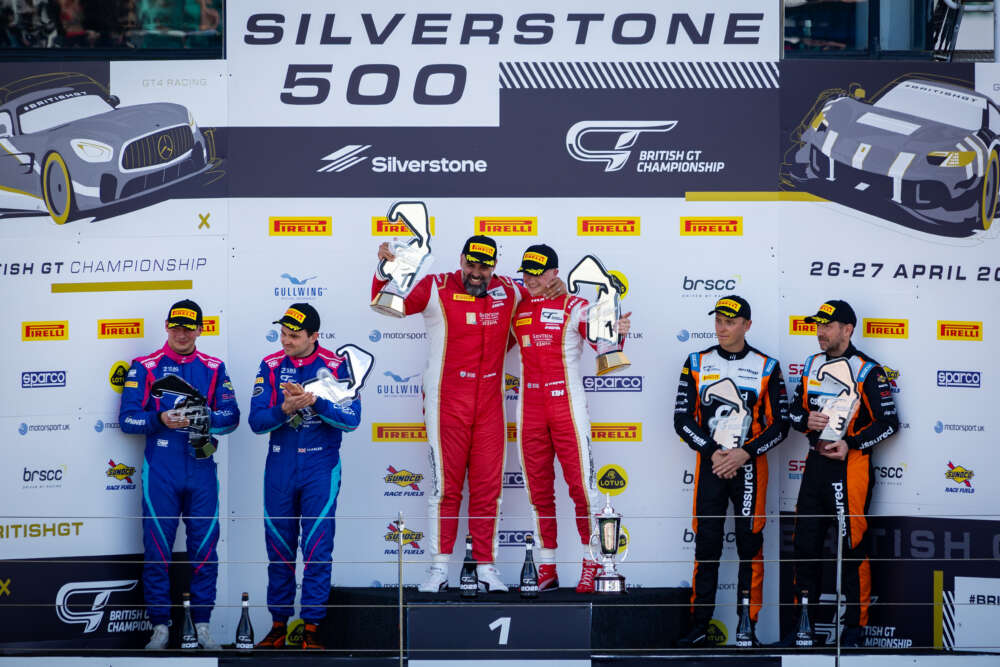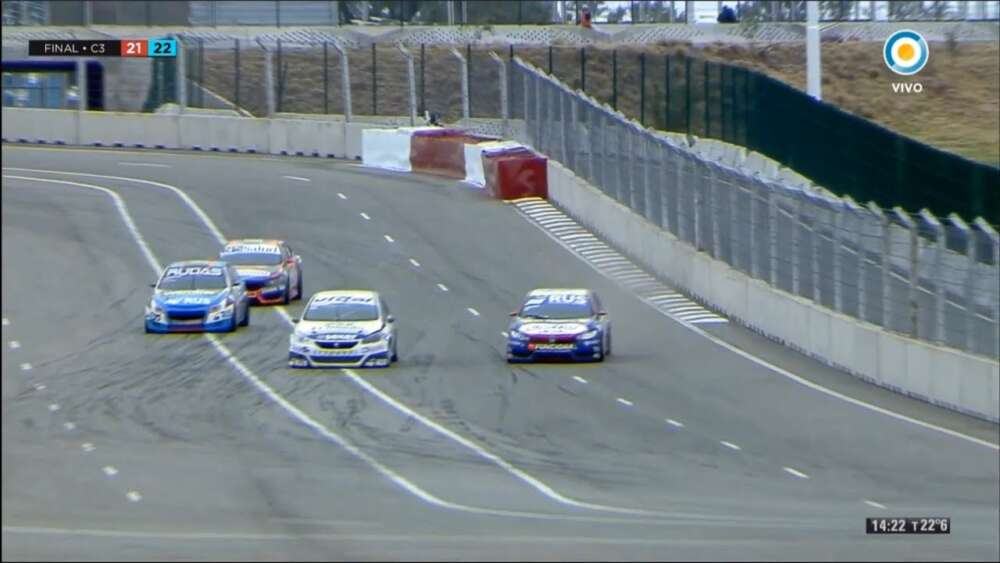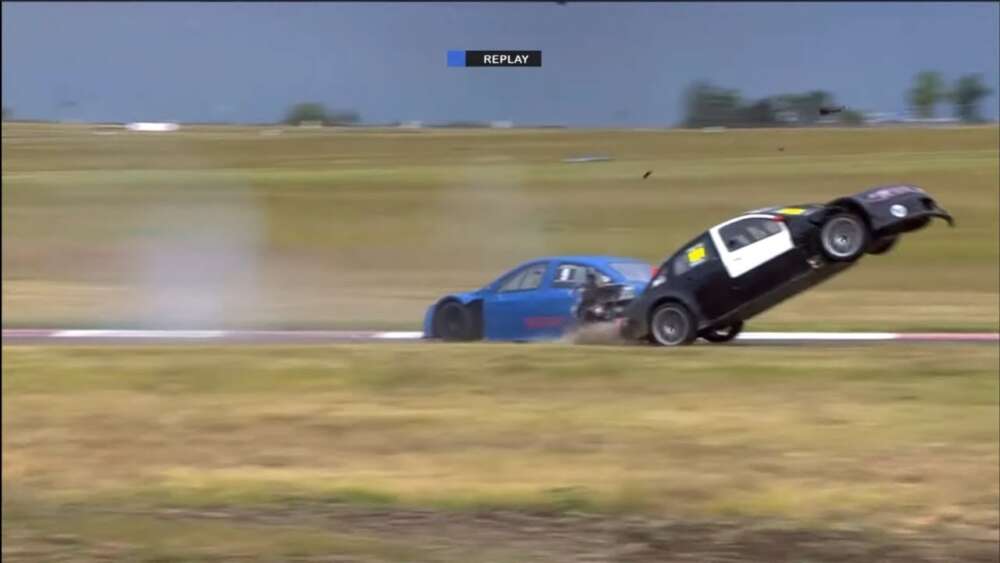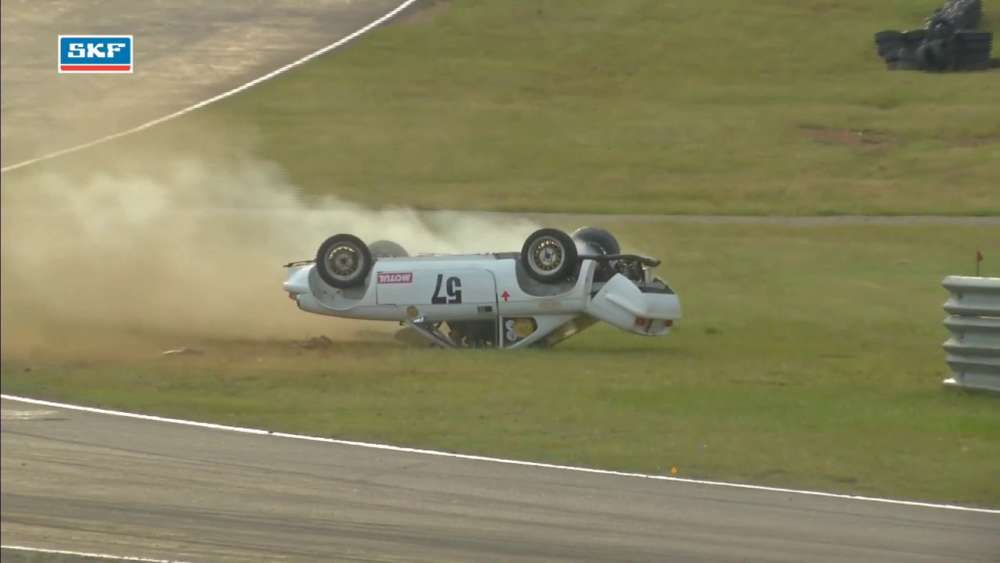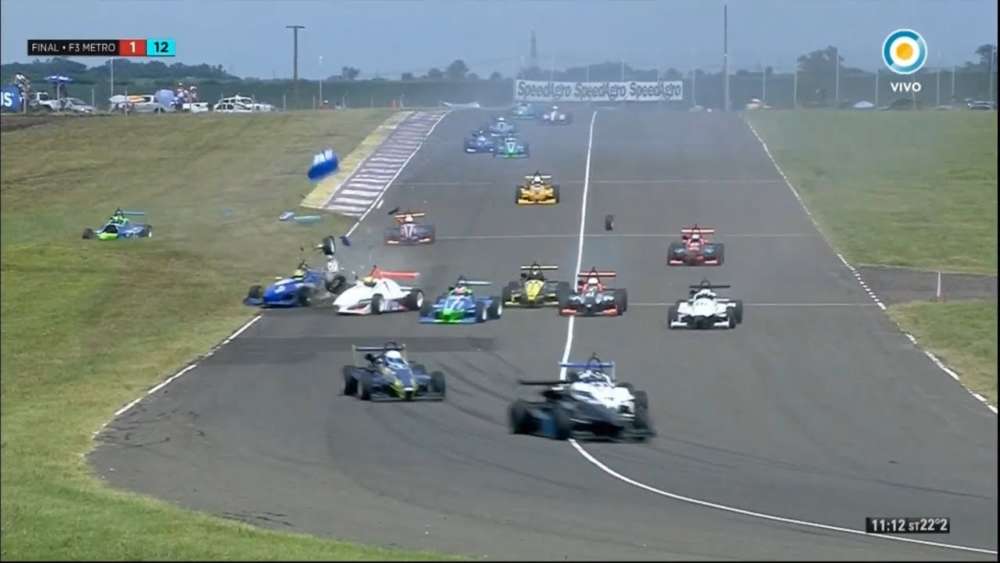
The countdown is over, and half a century of waiting is coming to an end. Ferrari is returning to the top class of the FIA World Endurance Championship, after fifty years since its last appearance at the stage for the most prestigious of endurance races. The historic occasion is set for Friday, 17 March when the Ferrari 499P will make its debut at the 1000 Miles of Sebring, the opening event of the 2023 WEC.
The two Le Mans Hypercars from the Prancing Horse have been entrusted to crews made up of Antonio Fuoco, Miguel Molina and Nicklas Nielsen, who will share the cockpit of the prototype with the number 50 on its livery, and of Alessandro Pier Guidi, James Calado and Antonio Giovinazzi, in number 51. The six drivers will take on one of the most challenging races on a technical level and in terms of reliability, due to a particular road surface that combines asphalt and cement and that the fans well know for its bumps and changes.
The event in Florida will open with the Prologue, on Saturday 11 and Sunday 12 March, and will continue the following weekend: Wednesday 15 with two free practice sessions from 10.55 a.m. and 4.35 p.m. respectively, Thursday 14 with a free practice session from 11.55 a.m. and from 7.20 p.m. and qualifying that will decide the starting grid for the 1000 Miles (8 Hours), kicking off on Friday 17 from 12 noon (all times are local).
THE HISTORY – A WINNING TRADITION
A byword for endurance racing in America, the Sebring International Raceway was inaugurated in 1950, the same year that the first six-hour endurance race was held. Ferrari earned 12 overall wins and 37 class wins on the challenging asphalt of the circuit that covers 6.020 km with 17 turns. The first win dates to 1956 and came courtesy of the 860 Monza driven by Juan Manuel Fangio and Eugenio Castellotti, whereas the most recent one was in 2016 when Christina Nielsen, Jeff Segal and Alessandro Balzan prevailed in the class reserved for production-derived cars in the 488 GT3.
TECH INSIGHT – THE DEVELOPMENT OF THE 499P
Developing a car representing state-of-the-art technology as applied to racing involves various stages, from the first sketches to the virtual prototype, simulator and testing on the track. It’s a journey made up of ideas shared, technical tests and trials, as Giuliano Salvi, Ferrari GT & Sports Race Cars Race & Testing Manager, explains. “From the Shakedown on 6 July 2022 to the final tests before the debut, we completed over 24 thousand kilometres with the 499P. From the simulator to the track, we employed a new working methodology to achieve a fast, reliable Hypercar.”
DRIVER PROFILE – JAMES CALADO
James Calado, three-time world champion in the LMGTE Pro, is ready for his Hypercar-class debut at the wheel of the number 51 499P shared with Pier Guidi and Giovinazzi. The British driver was born in 1989 and his passion for racing goes back to his childhood: “My father loved race cars and bikes. The first race I saw in person together with him was the 1999 Formula 1 GP in Silverstone: I remember as if it were yesterday.” Calado has picked up 12 WEC wins, some in the wet, in the course of his career. “I always raced with slicks on go karts, even when it was raining: I quickly learnt to adapt that way.”
Before becoming an endurance racing star, James Calado competed in single-seaters with internal combustion and electric powertrains. “I love every kind of engine on a vehicle with four or two wheels,” says the three-time British world champion with Ferrari in the LMGTE Pro class. The driver was born in 1989 and made his top-class FIA WEC debut in the 2023 season in the number 51 499P shared with Alessandro Pier Guidi and Antonio Giovinazzi.
Family. “My father gave me a passion for racing. I thank him for giving me the opportunity to race, which he never had,” says Calado. “The first race I saw in person was the Formula 1 GP in Silverstone in 1999. It was a magical Sunday, despite Michael Schumacher’s accident. He’s one of my heroes. The other? Ayrton Senna, who I admired for his speed and driving style.”
The beginnings. James’ first foray into motorsport proved encouraging. “I won my first karting race, while success in a single-seater came in Snetterton in 2008 in the first season of the British Formula Renault 2.0: it was one of the most intense emotions I’ve ever felt.” In the first season of karting, “my family went to great lengths: we couldn’t afford a hotel room, so at weekends I slept in the back of our old van, which became my bedroom. We couldn’t buy wet tyres either: I used slicks even when it was raining, a necessity that then helped me adapt quickly to every situation on the asphalt.”
His youth results bolstered his dream of becoming a professional driver. “Motorsport is a world which demands a lot of sacrifice in your private life. When you start achieving wins, it rewards those sacrifices,” he says. “Winning is everything for me. In the very last seconds before crossing the line or before my teammate passes under the chequered flag, I feel an indescribable sensation. It’s great to see the joy on the faces of all the people in the team and feel part of a group of winners.”
The successes. As of 2014, James switched from single-seaters to GTs with Ferrari. “It takes time to reach a good level. The first hurdle to overcome was mental: not thinking individually any more, but as part of a team who share the car. Then we started down a road that would lead us to dominate in GT,” says the driver who has 12 WEC wins to his own name, including two in the 24 Hours of Le Mans (2019 and 2021). “The approach to the LMH is similar: a new challenge, a brand-new experience. There’ll be no shortage of pitfalls, starting with handling the traffic. I’m on a team with victory in its sights and we’ll do anything it takes to achieve it. My dream? Returning to the top step of the podium at Le Mans with the Hypercar.”
The endurance race held at the Circuit de la Sarthe stands out in Calado’s mind. His analysis: “After a number of errors in previous editions, the first win arrived in 2019. I lost my voice shouting with joy after the race.”
Endurance. An endurance race demands that drivers and teams put in an effort made up of energy, determination and concentration, various factors of equal importance. “Endurance isn’t about speed alone, but also strategy, management and patience. For my first Le Mans I stayed awake for 40 hours, I felt agitated and tense, but the tiredness had a negative effect on my performance in the long run,”relates Calado. “It became a lesson for me. I learnt that a 24 Hours is a real marathon during which, as well as not committing errors, you have to find time to rest. After two stints of driving I go back to the motorhome, put my smartphone and tablet away, turn off the light and try to sleep.” Endurance racing was a sporting adventure that often saw Calado alongside Pier Guidi. “We have a very strong connection, know each other inside out and have always respected each other. Even when we’ve committed errors we’ve always understood each other,” he says. “Mutual support is a characteristic aspect of our whole team.”
Emotion. “In the days before the race, the tension keeps building, until the time comes and, when you climb into the car on the starting grid, the pressure peaks,” explains the driver for the number 51 Ferrari 499P. “You know that everyone’s looking at you and trusts you. It’s only after the first stints that the tension starts to ease off.”
James stresses the value of the fans on an emotional level: “I feel fortunate to be a Ferrari driver. I’ve always been a fan of Ferraris,” he explains. “I love the passion of Italians for Ferrari. The fans create that magical adrenaline-charged atmosphere that we really pick up on, especially on the starting grid. My dream is to reward them all with a great triumph, at Le Mans perhaps, the most eagerly awaited race, or at Monza, on our home turf.”
The advice. Reflecting on the past, James would advise an aspiring young driver to “always be ready for the next step, for the challenge that’s going to present itself in the next race.” He concludes: “It’s also vital to keep your ego in check, preventing it from outgrowing your talent, and treasure what you learn from others.”
“From simulator to track, we’ve applied a new working methodology to deliver a fast and reliable hypercar,” explains Giuliano Salvi, Ferrari GT & Sports Race Cars Race & Testing Manager.
From the announcement in February 2021 of Ferrari’s return to the top endurance class up until its debut in the Hypercar class of the FIA World Endurance Championship on 17 March 2023, the 499P has passed through several development stages. It was a team effort involving over 30 engineers.
Two dates were crucial to the timeline: the Shakedown on 6 July 2022, and the race debut. “We can speak of three principal phases: on the simulator, the bench, and the track,” Salvi explains. “We developed the conceptual part of the 499P in the simulator. Then we began concurrent work on the bench, collecting and analysing every input from the simulator tests. When the car reached a certain level of maturity, we started work on the track.”
The choice of tracks. The test circuits were chosen according to their characteristics and to maximise the limited time available: Fiorano, Imola, Mugello and Vallelunga; plus Paul Ricard, Aragon and Portimão (three European tracks suitable for endurance tests). Portimão will also host a round of the WEC, as will Monza and Sebring. The two cars had covered a total of over 24,000 kilometres before March. “For the hypercar, after the vehicle’s homologation, there are a limited number of track tests. Therefore, we tried to use every opportunity to effectively integrate all the systems and improve the reliability level of the car’s components”.
The team. Continuous interaction between the digital and real ‘world’ made it possible to fine-tune the 499P’s various components, using two cars simultaneously and employing a team of 30 engineers. During development, track work accounts for about 70% of the effort, and the remaining 30% occurs in the simulator.
The first development phase focused on “electronic management” continues Salvi, “to coordinate the 800-volt hybrid system in a 4WD layout, comprising an electric engine at the front and an internal combustion engine at the rear. Having identified the problems, we solved them so the programme could be as continuous as possible.”
From digital to real. There are two main strands of development: one is about performance, and the other is about reliability. “When the programme starts, there are models – derived from digital simulation – that determine how the car should behave in reality,” Salvi continues. “Bringing virtual and real together is the ultimate development challenge.”
Simulator work makes it possible to multiply the calculation capacity and to model very different scenarios, which is crucial in developing performance. Then came the time for the first actual tests, which “we worked on using an innovative approach, a new methodology for us,” says Salvi. “After a test, we analyse each component, and if defects or problems are found, they are categorised. Once we have prioritised the categories, we address individual problems, modify parts, and improve the product-car – all of which help to improve reliability.”
A continuous process. When developing a hypercar, it is common to encounter critical issues that, once resolved, help to make up the wealth of experience you need during the championship. “The areas that proved most challenging were the electronics, the part related to the hybrid powertrain and the 4WD system,” Salvi explains, “but test after test, we improved their operation.” However, development doesn’t stop with the start of the FIA WEC. As with any new project, each kilometre covered provides essential information. “We will be out on the track whenever we have the chance, to continue our work on reliability development and improving our competitiveness.”
FACTS & FIGURES
1950: inaugural year of the Sebring International Raceway
6.020: length of the circuit (in kilometres)
12: overall Ferrari wins at the 12 Hours of Sebring (1956, 1958–59, 1961–64, 1970, 1972, 1995, 1997–1998)
1972: the last Ferrari world champion title in the top class of the World Sportscar Championship
1973: last time Ferrari competed in the top class
2022: Ferrari wins the Manufacturers’ and Drivers’ world championship titles in the LMGTE Pro class of the WEC
24,000: kilometres covered in 499P testing
499: the cylinder capacity of the Ferrari Hypercar’s V6 engine
Sebring – the track built on the site of a US military airport – is set to host the opening act of the 2023 FIA World Endurance Championship. Here is a history of the Prancing Horse’s victories there.
The Sebring International Raceway was inaugurated in 1950 when the first race over the six-hour distance was held. The circuit is 6.020 kilometres long and includes 17 turns.
Ferrari have clinched 12 overall victories (plus 37 class wins) at the Florida track – one of the most iconic yet technically demanding in the world – some of which remain etched in the memories of racing enthusiasts. The first goes back to 1956 and was claimed by the 860 Monza driven by Juan Manuel Fangio and Eugenio Castellotti.
The 1960s. From 1961 to 1964, Ferrari vehicles racked up four triumphs at the 12 Hours of Sebring: the first of the string of wins was recorded by the 250 TRI/61 of Phil Hill, paired with Olivier Gendebien, with the American driver achieving his third win on the spin at the wheel of a red racer. The final one was celebrated by the 330 P of Mike Parkes and Umberto Maglioli.
The year 1969 saw the debut in Florida of a car destined to go down in history – the Ferrari 312 P – which took pole position courtesy of Mario Andretti, who alongside teammate Chris Amon finished the race in runner-up spot.
Flying start. A year later, in 1970, Sebring welcomed one of the most important innovations in endurance racing – the rolling start – tested for the first time at the 12 Hours, won by Andretti himself, Ignazio Giunti and Nino Vaccarella at the wheel of the Ferrari 512 S, which took the chequered flag 23 seconds ahead of the chasing pack.
Historic wins. The 312 PB dominated in the World Sportscar Championship in 1972 thanks to ten first-place finishes notched up by Andretti and Jacky Ickx. The American and the Belgian driver romped home to victory at Sebring, Daytona and Watkins Glen, the ‘cathedrals’ of star-spangled endurance racing.
The last overall win dates back to 1998 when Gianpiero Moretti, Mauro Baldi and Didier Theys finished first in the F333 SP, while Ferrari’s most recent success was in 2016, in the GTD class, with Christina Nielsen, Jeff Segal and Alessandro Balzan aboard the 488 GT3.
Source. Ferrari


